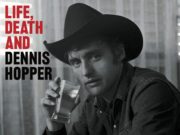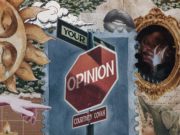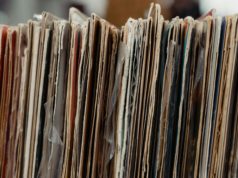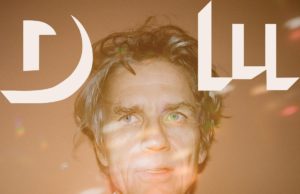 I don’t subscribe to the notion that the best years for rock were 1968-1973, but I totally understand why so many people feel this way. This was when rock music really started to diversify into electric blues, prog, Krautrock, space rock, hard rock, boogie, swamp rock, country rock, Americana, supergroups, fusion, funk, folk rock, psychedelic rock, glam, etc. There are a great many influential, hall of fame, all-time favourite acts from this era — which happened more than 50 years ago. The unfortunate reality of this is there are hardly any of these musicians — let alone bands — still alive and well.
I don’t subscribe to the notion that the best years for rock were 1968-1973, but I totally understand why so many people feel this way. This was when rock music really started to diversify into electric blues, prog, Krautrock, space rock, hard rock, boogie, swamp rock, country rock, Americana, supergroups, fusion, funk, folk rock, psychedelic rock, glam, etc. There are a great many influential, hall of fame, all-time favourite acts from this era — which happened more than 50 years ago. The unfortunate reality of this is there are hardly any of these musicians — let alone bands — still alive and well.
Personally, I don’t need my favourite bands to have longevity. In fact, more times than not, the deeper the discography, the shittier it gets. Don’t get me wrong, I’m not unmoved by the passing of a beloved musician. All I’m saying is, it matters more to me when musicians die before they’ve realized their potential. But there are some who hold their favourite musicians and groups in exalted esteem. Their original lineups being the purest source of their magic elixir. Therefore, while it would be a banner day to attend an Alice Cooper or Fairport Convention show, seeing one in 1971 would have been far better.
But there’s a huge problem with this: Just try to find one of these 1968-1973 bands with all its original members still among the living. OK, I will.
Black Sabbath
The original lineup of John “Ozzy” Osbourne, Tony Iommi, Terry “Geezer” Butler and Bill Ward are all still alive as of December 2024. Black Sabbath formed in 1968 and performed with this lineup until June 1978, with Ozzy being officially dismissed in April 1979. There were reunions, though. The last time the original lineup performed together was Oct. 18, 2005 at the U.K. Music Hall of Fame. They did Paranoid.
KISS
All four members of the original “hottest band in the world” are still around. KISS, as a performing band, officially called it quits after a lengthy farewell tour on Dec. 2, 2023. Gene Simmons (Haim Witz), Paul Stanley (Stanley Eisen), Paul “Ace” Frehley and Peter Criss (Peter Criscola) started playing together in 1973. The original lineup ceased to be (for the first time) in May 1980, but the last time they performed together on that go-around was Dec. 16, 1979 — the final gig with Criss on drums. Frehley officially followed suit by the end of 1982. Simmons and Stanley remained the core of the band through various lineups through to their highly successful reunion in 1995, which spawned an album and tour. The last time the original lineup performed together was Oct. 7, 2000, with a show at the North Charleston Coliseum. It ended in a lot of smashed guitars and drums, due in part to Criss being unhappy about being paid less than Frehley. When the tour started up again in March 2001, Eric Singer was the drummer — wearing the iconic cat makeup.
Manfred Mann
Every member of the original five-piece band is still alive. Their first album, 1964’s The Five Faces of Manfred Mann, featured Manfred Mann on keys, Paul Jones on lead vocal, Mike Vickers on guitar, Tom McGuinness on bass and Mike Hugg on drums. Within a year or so, Vickers split and Jack Bruce was brought in to play bass, with McGuinness moving to guitar. The band were active through 1969 when they folded and morphed into Manfred Mann Chapter Three, and then again into Manfred Mann’s Earth Band in 1971. These days, three members of the original band — Hugg, Jones and McGuinness — still perform together as The Manfreds. They have gigs booked through 2025. The Earth Band also still continue to tour. Both Mann and original Earth Band guitarist/vocalist Mick Rogers front the group. The original lineup last performed together at a one-off reunion show in June 1983 marking the 25th anniversary of the Marquee Club.
Aerosmith
These Boston blues-rockers have around since 1970, with their self-titled debut album appearing on Jan. 5, 1973. The original lineup — lead vocalist Steven Tyler, guitarists Joe Perry and guitarist Brad Whitford, bassist Tom Hamilton and drummer Joey Kramer — stayed together through 1979, when Perry quit for five years. Whitford did the same thing from 1981 to 1984. The other three have been in the band all along. Aerosmith were planning a farewell tour — without Kramer — in 2023-2025, but it was cancelled after Tyler suffered a vocal cord injury. They only managed three gigs on the Peace Out tour before it was cancelled — the last one being on Sept. 9, 2023. The band say they’ve retired from the road. The last time the original lineup performed together was Nov. 29, 2022.
Cheap Trick
The pride of Rockford, Ill., first came on the scene on Aug. 15, 1973, when they adopted the name Cheap Trick. Briefly, the band had a different lead vocalist, Randy “Xeno” Hogan, who was replaced by singer/guitarist Robin Zander in 1974 before the band recorded their earliest demos. Along with founding members Rick Nielsen (guitar), Tom Petersson (bass) and Bun E Carlos (drummer Brad M. Carlson), the original lineup held together until 1980 when Petersson left after the All Shook Up album. There were two interim bassists before he returned in 1987 for the comeback album Lap Of Luxury. Carlos left the band in March 2010 after a falling-out with Zander. The band spent the next several years fighting with Carlos in court over money. He has since played with them one more time — when they were inducted into the Rock And Roll Hall Of Fame on April 4, 2016.
Genesis
The prog-rock giants are probably done for good, given that singer and former drummer Phil Collins has faced serious health issues since before their successful The Last Domino? farewell tour in 2021-22. The band formed in 1967 — 20 years before they would have their best-selling record. There were basically four different lineups of the band and, musically, four somewhat related styles or approaches. Back in January of ’67, two Surrey bands broke up — The Anon and The Garden Wall. From those bands, Genesis was formed by vocalist Peter Gabriel, keyboardist Tony Banks and drummer Chris Stewart (all from The Garden Wall) and guitarist Anthony Phillips and bassist Mike Rutherford from The Anon. All are still alive, but I don’t really consider this the first proper band lineup, even though they did record the single The Silent Sun. Stewart quit right after the single because his folks didn’t want him playing in a band. They grabbed new drummer John Silver — also still alive. This lineup recorded the debut album From Genesis To Revelation. Then Silver quit, replaced by John Mayhew, who died in 2009. Mayhew appears on the first record that really sounds like Genesis — 1970’s Trespass. He also was the first drummer to perform with the band in concert. But he was only in the band for that album before being replaced by Collins. Then Phillips quit and was replaced by guitarist Steve Hackett, solidifying the first of three definitive lineups. Hackett, Collins, Gabriel, Rutherford and Banks are all alive. This group remained intact through four albums before Gabriel quit. They did two more as a four-piece with Collins doing double duty as lead vocalist and drummer until Hackett quit in 1977. Since then, the core of the band has been Collins, Banks and Rutherford — and it is this lineup which scored their only No. 1 albums: Duke (1980), Abacab (1981), Genesis (1983), Invisible Touch (1986) and We Can’t Dance (1991). The last time the original lineup performed together was in the Decca recording studio in December 1967 when they cut The Silent Sun. The photo of the band included with their 2010 Rock And Roll Hall Of Fame induction is the five-piece from 1971-’75. Accepting the award were Collins, Rutherford, Banks, Hackett and touring members Chester Thompson and Daryl Stuermer. The last time the band performed was March 26, 2022 in London, England — the 46th anniversary of Collins’ first gig as lead vocalist on March 26, 1976 in London, Ont. Gabriel was backstage at the 2022 show, but didn’t perform. The last time he performed with Genesis was Oct. 2, 1982 at the Six Of The Best reunion show to help Gabriel recoup losses from his WOMAD concert.
Grand Funk Railroad
Pure rock ’n’ roll, Grand Funk Railroad hail from the long-suffering city of Flint, Mich., where they formed in 1969 as the power trio of vocalist/guitarist Mark Farner, drummer Don Brewer and bassist Mel Schacher. Their debut album On Time (1969) went gold and the next four went platinum, followed by another gold record, another platinum record and two more gold records. The group continued as a three-piece until they officially added keyboardist Craig Frost in time for their seventh album We’re An American Band (1973). Frost had appeared on the previous record Phoenix (1972) as an “additional musician.” Grand Funk’s first gig was one they played for free, hoping for publicity. It worked. Playing the opening slot at the Atlanta International Pop Festival on July 4, 1969, led to a deal with Capitol Records. Their last performance before becoming a four-piece likely happened sometime around their 1971 sellout show at Shea Stadium. The original trio got back together for a time in 1997, until Farner quit for good in late 1998. The last show appears to be Nov. 14, 1998 in Sioux City, Iowa — but Brewer and Schacher continue to perform as Grand Funk to this day.
Abba
Though currently being portrayed by ABBAtars, all four members of the incredibly successful Swedish pop group are alive and well. They formed in Stockholm in 1972 with Agnetha Fältskog on vocals, Björn Ulvaeus on guitar and vocals, Benny Andersson on keyboards and vocals, and Anni-Frid Lyngstad on vocals. Though there was never an official breakup, their last performance for many years was on a Stockholm TV show on Dec. 11, 1982. There was a 2016 reunion which didn’t feature any performances, and the release of new material on Abba Voyage in 2022 — but still no performances. The recording of Voyage between 2018 and 2021 would have been the last time they played together. Publicly, however, they haven’t performed since Dec. 11, 1982.
10cc
All members of the original four-piece are still around. 10cc formed in Manchester in 1972 with Graham Gouldman on bass and lead vocals, guitarist Eric Stewart, drummer-singer Kevin Godley and multi-instrumentalist Lol Creme. They stuck around until 1976, when Godley & Creme quit to form a duo just as the band were recording their fifth studio album. Their last gig on this go-around was probably at Knebworth in the summer of 1976. In 1991, the original members reunited to record Meanwhile (1992) and toured the album in 1993. The final performance of the reunited original lineup happened on Aug. 21, 1993 in the Netherlands.
XTC
Swindon’s favourite sons — at least prior to the U.K. version of The Office — were initially known as Star Park (1972-1974) and then The Helium Kidz (1974-1975). They went by XTC from 1975 to its dissolution in 2006. The original members are all still around — singer-guitarist Andy Partridge, bassist Colin Moulding, keyboardist Barry Andrews and drummer Terry Chambers. Their first recording was the 3D EP, recorded in three days at Abbey Road in April 1977. This unit stayed together until 1979, when Andrews left during the U.S. tour to promote the band’s 1978 album Go 2. Patridge phoned guitarist Dave Gregory and asked him to join. His first gig was Feb. 8 and he was officially named a member of XTC on March 5, 1979. So the last time the original lineup performed together was Jan. 17 at the Paris Theatre in London, England — their first show back in the U.K. after two at The Edge in Toronto and one in Calgary. Those Edge shows were heavily bootlegged — you can buy a vinyl copy on Discogs. There are also plenty of photos, which clearly show Andrews still in the band even though he’d likely already announced his decision to quit.
Question Mark & The Mysterians
Even though this four-piece formed back in 1962, all of them are still kicking. This is perhaps even more surprising, given that two of them were drafted for Vietnam, and their fearless leader — the mysterious ? (aka Rudy Martinez) lost nearly everything in a fire a few years ago. The Michigan group were all the children of migrant farm hands, and started off as a surf rock-influenced trio featuring Larry Borjas on guitar, Robert Martinez on drums, and Bobby Balderrama on lead guitar. They later added Martinez’s brother as vocalist. Everything really came together with the addition of Frank Rodriguez on keys, leading to a successful indie-label audition where they cut a single. The band didn’t come up with their definitive song, 96 Tears, until after Borjas and the drumming Martinez got draft notices, and enlisted in order to avoid being sent to Vietnam. Imagine their anguish as they watched their old band come up with a smash hit single in the weeks that followed. Robert eventually rejoined the group, but Borjas never performed with them again.
The Modern Lovers
Much like what Cockney Rebel became to Steve Harley, The Modern Lovers started off as a proper group but eventually became a backing band for Jonathan Richman. Back in 1969, suburban Bostonites Richman and John Felice were living in New York City when they formed the band — one of countless outfits inspired by The Velvet Underground. The original lineup featured Richman on vocals and guitar, Felice on guitar, future Cars member David Robinson on drums and Rolph Anderson on bass. All four survive. When they played their first gig in Sept. 1970, they already had Roadrunner, Hospital and She Cracked. Anderson and Felice split in 1971, but the band added bassist Ernie Brooks and future Talking Heads MVP Jerry Harrison on keyboards. These two are also still alive. This constituted The Modern Lovers’ classic/definitive lineup. The group split in 1974 without releasing a debut album — the material eventually was released in 1976. The success of the record led to Richman putting an entirely different group together and launching Jonathan Richman & The Modern Lovers.
Golden Earring
The Dutch rockers are one of the most underrated bands of the classic rock eras. It’s surprising, considering how long they were around. Formed in 1961 (!!), the group took a while to settle on a lineup, but did so in 1970 — and stuck with it right through until their retirement in 2021. The first lineup from 1961-’65 was Rinus Gerritsen on bass and keys, vocalist/guitarist George Kooymans, Frans Krassenburg on lead vocals, and drummer Jaap Eggermont. In 1968 Barry Hay joined, taking over as frontman from Krassenburg. The following year, Cesar Zuiderwijk took over drums from Eggermont, who went on to be the producer who gave us Stars On 45. The last hurrah of the band’s original lineup was the 1967 hit, That Day.
• • •
Area Resident is an Ottawa-based journalist, recording artist, music collector and re-seller. Hear (and buy) his music on Bandcamp, email him HERE, follow him on Instagram and check him out on Discogs.










































